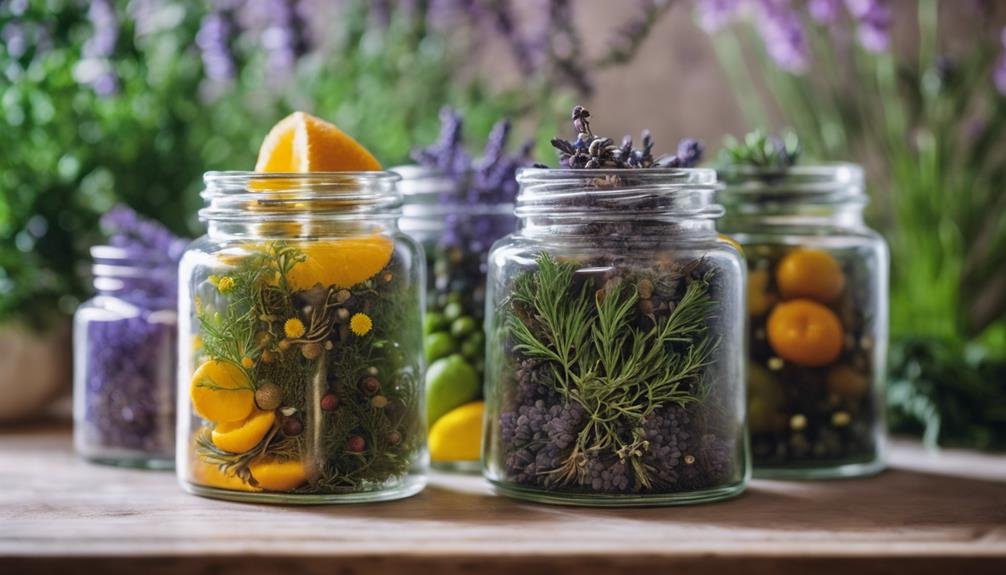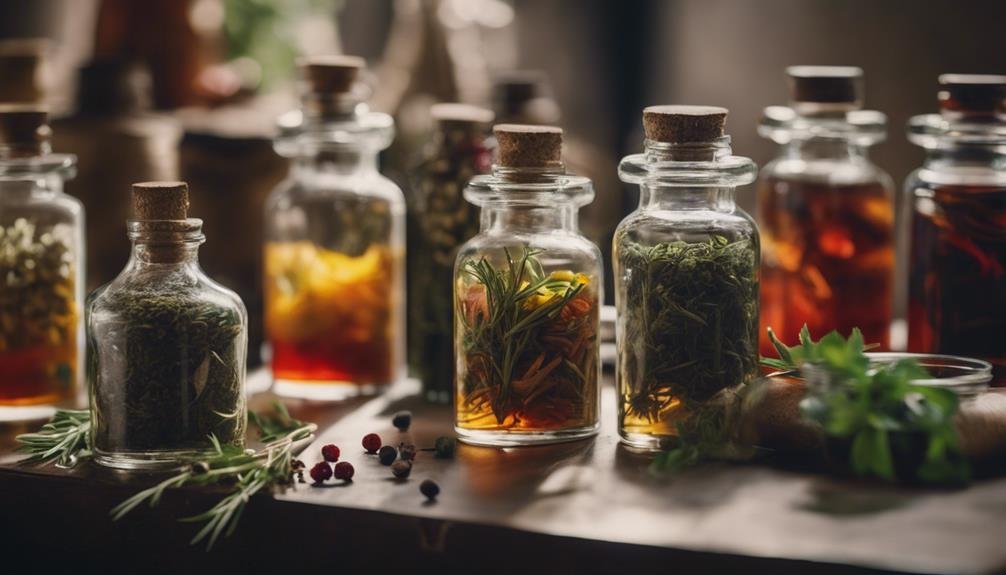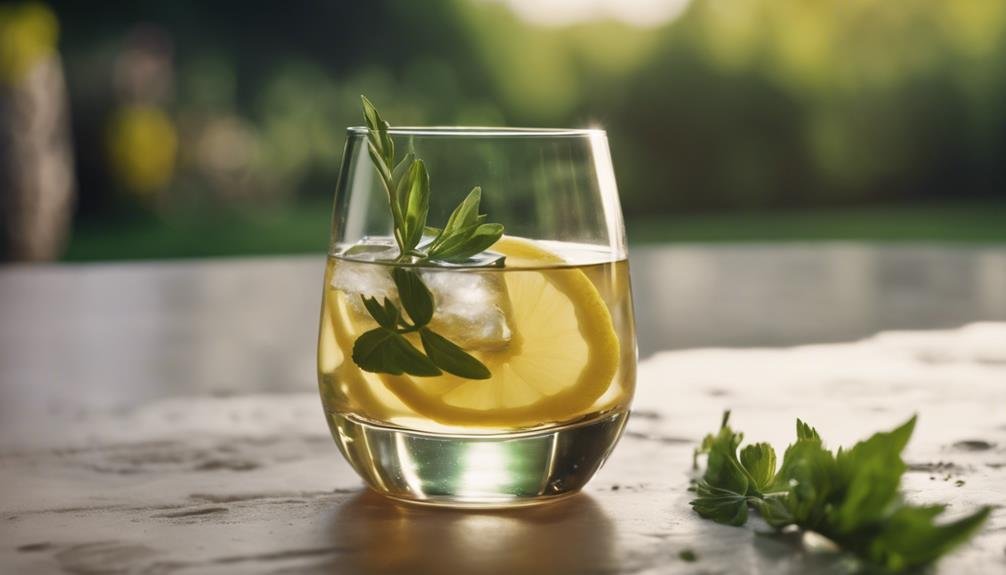Begin a flavorful journey through vermouth's intricate world, blending traditional craft with modern innovation. From classic sweet and dry versions to the aromatic Golden and Rosé Vermouth, global influences have sparked diverse styles. Production involves blending wine, botanicals, sugar, and alcohol, combining artisanal techniques and modern methods. Citrus peels, herbs, and spices are infused in up to 33 botanicals for nuanced flavors. Vermouth's historical roots with wormwood suggest medicinal origins. The expanding world of aperitifs offers regional variations and innovative blends, appealing to classic and adventurous tastes. Discover the intricate flavors bridging past traditions and contemporary palates.
Evolution of Vermouth Styles
How have the traditional sweet and dry styles of Vermouth evolved to include newer variations like Golden Vermouth and Rosé Vermouth, reflecting modern tastes and preferences in the world of aromatized wines?
Modern interpretations of Vermouth have embraced global influences, leading to the creation of diverse styles beyond the classic sweet and dry categories. Golden Vermouth, also known as Vermouth d'Oro, introduces a rich and aromatic twist with its golden hue, appealing to those seeking a more opulent flavor profile.
On the other hand, Rosé Vermouth, or Vermouth Rosato, presents a delicate and invigorating option, blending the traditional botanical complexity with a hint of fruitiness. These newer Vermouth variations cater to evolving palates and offer a broader spectrum of choices to discerning consumers worldwide.
Intriguing Vermouth Production Process
The intricate process of Vermouth production involves a meticulous blend of wine, botanicals, sugar or mistelle, and alcohol to create this beloved aromatized beverage. Artisanal techniques and modern innovation are employed alongside regional variations and global influence to craft Vermouth. Different regions bring their unique touch to the production process, influencing the final flavor profile of the Vermouth. From the traditional methods passed down through generations to the incorporation of cutting-edge technologies, Vermouth production continues to evolve. This dynamic combination of old-world charm and contemporary practices guarantees that Vermouth remains a versatile and sought-after drink. The table below provides a glimpse into the fascinating world of Vermouth production:
| Traditional Methods | Modern Techniques | Regional Influence |
|---|---|---|
| Maceration of Botanicals | Vacuum Distillation | Italian Influence |
| Oak Barrel Aging | Cryoextraction | French Touch |
| Handcrafted Blending | Automated Mixing | Spanish Flair |
Diverse Botanicals Enhancing Vermouth Flavor

Utilizing a diverse array of botanicals enhances the nuanced flavors of Vermouth, elevating its complexity and depth in every sip.
- Botanical Infusion: Botanicals like citrus peels, herbs, and spices are carefully selected for their unique flavors and aromas.
- Flavor Complexity: Up to 33 botanicals can be blended in Vermouth production, creating a rich and multi-layered taste profile.
- Maceration vs. Distillation: Botanicals play an essential role in Vermouth production, extracted either through maceration in alcohol or distillation to capture their essence.
- Balancing Act: Blending different botanicals in precise quantities is an art form, ensuring the final product achieves a harmonious flavor complexity that delights the senses.
Vermouths Medicinal Origins
Building upon the historical foundation of Vermouth's diverse botanicals, the medicinal origins of this aromatic fortified wine reveal a fascinating narrative of its early purpose and significance.
Wormwood, a key ingredient in Vermouth, has historical origins rooted in its medicinal benefits. In the 16th century, Turin emerged as a hub for wormwood production, highlighting its importance in creating this beverage. Wormwood was traditionally believed to aid in digestion and provide various health benefits, contributing to Vermouth's initial reputation as a healthful drink.
The incorporation of wormwood in Vermouth not only added a distinct bitterness but also underscored its medicinal associations, shaping the early perception of this beverage as a blend of botanicals with potential health-enhancing properties.
Expanding World of Aperitifs

Exploring the diverse landscape of aperitifs reveals a dynamic evolution in the domain of fortified beverages. Aperitifs are witnessing significant shifts driven by global trends and innovative blends. Here are four key points to ponder:
- Rise of Global Trends: Aperitifs are gaining popularity worldwide, with unique regional variations and flavors.
- Crafting Innovative Blends: Producers are experimenting with novel ingredients and techniques to create distinctive aperitif profiles.
- Exploration of Traditional Roots: Despite innovation, there is a renewed interest in traditional recipes and production methods.
- Diverse Consumer Preferences: Aperitifs now cater to a wide range of tastes, offering options for both classic enthusiasts and adventurous drinkers.
Frequently Asked Questions
How Do Different Vermouth Brands Vary in Taste and Aroma?
Different vermouth brands vary in taste and aroma due to their unique blend of botanicals, wine base, and production techniques. Flavor profiles and aromatic notes are influenced by factors like the choice of botanicals, sweetness levels, and the balance between bitter and sweet components.
What Are the Key Differences Between Vermouth and Other Aperitifs?
Vermouth and other aperitifs differ in flavor profiles and production methods. Vermouth, a wine-based drink, is aromatized with botanicals, offering a complex taste. It's commonly served neat or in cocktails. Aperitifs like Dubonnet and Byrrh vary in ingredients, taste, and serving suggestions.
Can Vermouth Be Enjoyed on Its Own or Is It Best in Cocktails?
Vermouth's allure shines both solo and in vibrant cocktails. Its versatility captivates palates, offering a spectrum of pairing options. Embrace mixology trends as Vermouth reveals a flavorful journey, elevating sips to a delightful experience.
Are There Any Regional Variations in Vermouth Production Techniques?
Regional techniques in Vermouth production vary, influencing flavor profiles. Italy emphasizes aromatic botanicals like Artemisia. France's approach may focus on fruitier notes. Spain often includes more citrus peels. These variations create distinct regional styles of Vermouth.
What Is the Shelf Life of an Opened Bottle of Vermouth?
When considering the shelf life of an opened bottle of vermouth, it is essential to store it properly to preserve its flavor. Exposure to oxygen can alter the taste over time. To extend its life, consider refrigeration or using a wine preservation system.
Conclusion
In a twist of fate, Vermouth, once hailed for its medicinal properties, now captivates the world with its flavorful allure in cocktails.
The evolution of Vermouth styles, intricate production process, and diverse botanicals have shaped its journey from ancient elixir to modern-day aperitif staple.
As Vermouth continues to expand its influence, it remains a tribute to the enduring legacy of craftsmanship and innovation in the domain of sophisticated libations.
